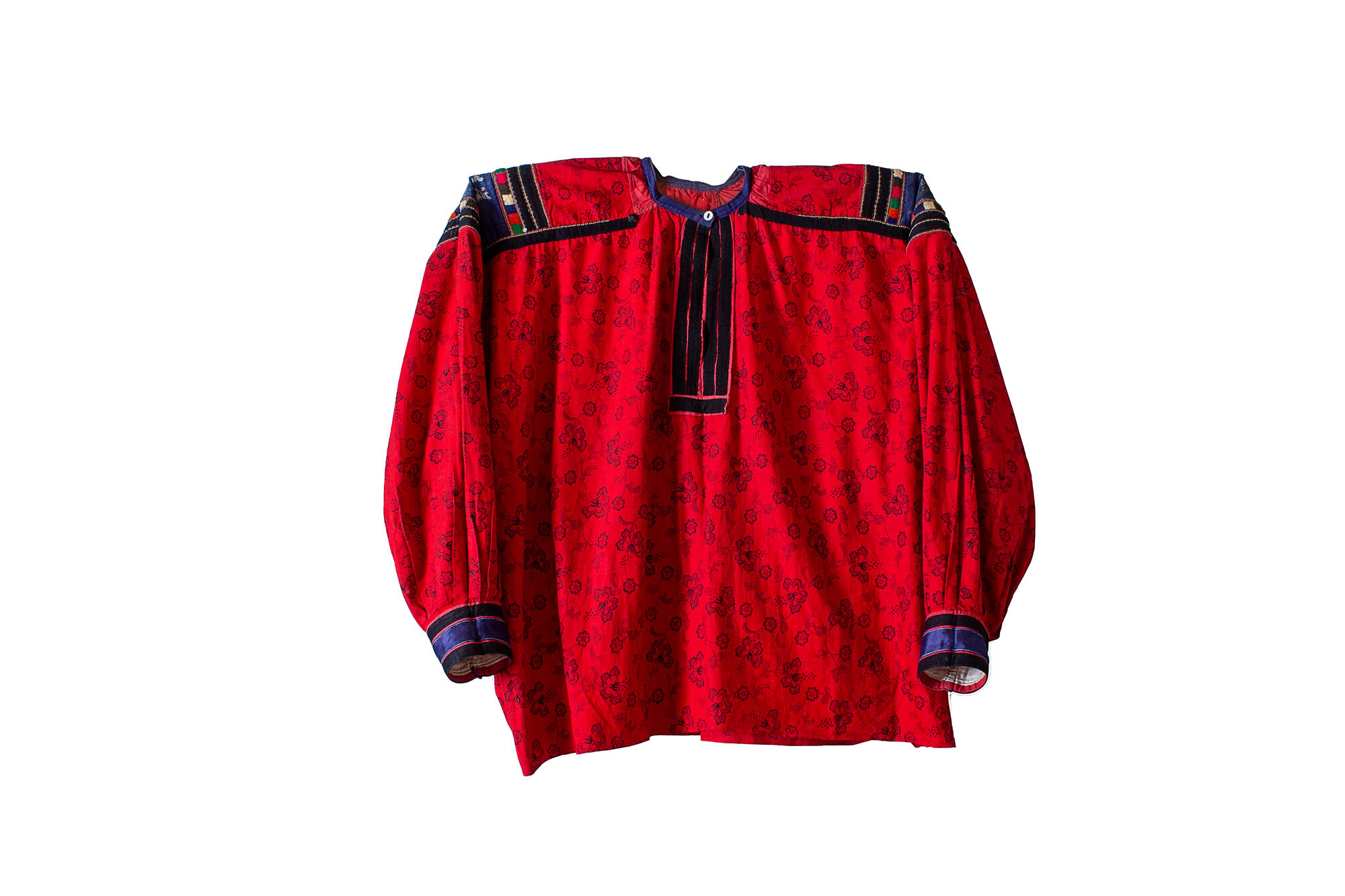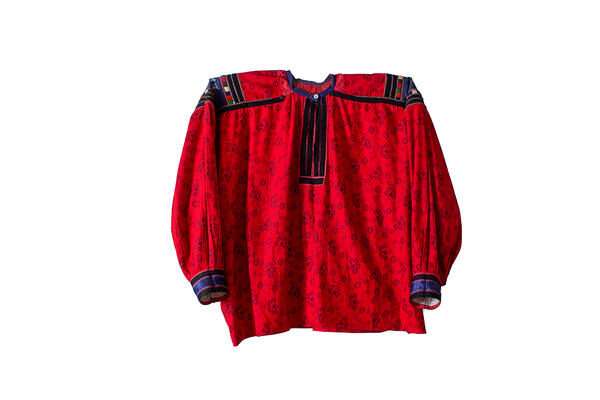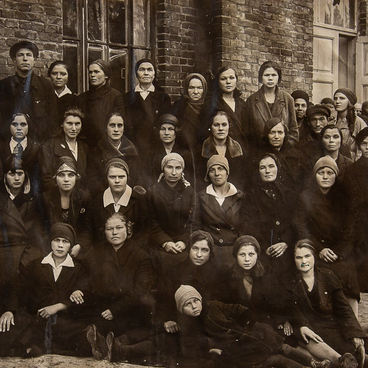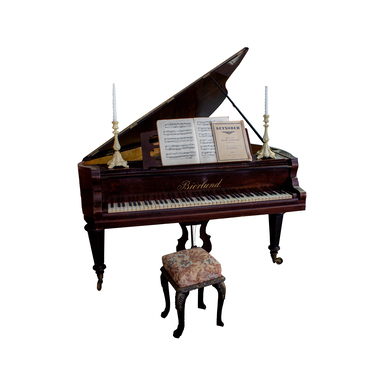Although Voronezh peasants dressed in various ways, their clothing was dominated by the Southern Russian style with local elements, including various geometric ornaments. Even within one village, the costumes could differ significantly. One of these shirts, made in the late 19th century, belongs to the museum’s collection.
Unlike women, most men in the Voronezh Governorate wore more or less similar clothes. As a rule, men wore loose shirts, pants, shoes, and hats. Belts were called ‘wallet keepers’. Inside the belts, men carried necessary household items, tools, and even weapons. Making a public appearance without a belt was considered extremely rude, and to unbelt someone meant to dishonor such a person.
There were three traditional types of shirts in the Voronezh Governorate. The most simple one was a loose tunic-like shirt. The main element of the second type of shirt were horizontal rectangular inserts known as ‘polik’. Sometimes a polik was made of a different fabric or color. Shirts of the third type had a shoulder yoke — an insert that connected the sleeves and the collar. Shirts with a shoulder yoke widened downward slightly and the fabric had wavy vertical folds. The shoulder yoke could consist of a single piece of fabric or two symmetrical parts.
Shirts were made of blue or red ‘pestryad’ — coarse fabric made of linen, wool, or cotton yarn waste. The Russian name of the material — which translates as motley fabric — was given to the fabric due to its diversity of colors. Such clothes were decorated in accordance with local traditions: the sleeves had cuffs, and the collar had ornaments or inserts. As a rule, these shirts had a skewed collar and were known as ‘kosovorotkas’.
The most highly decorated shirts had a central pattern known as ‘remen’, or a band. There were also smaller ornaments going from the band to the neck, as well as down to the wrist. They were known as ‘poduzorniki’, or small ornaments, and were topped with the so-called ‘paws’. Men’s shirts were decorated with rows of repeating elements, which were named differently in various regions, including such terms as “butterfly men”, “columns” or “shrubs”.
Shirts decorated with a band were considered to be the most festive ones. They were worn only on special occasions, such as weddings, the Twelve Great Feasts, and “annual” holidays. Such shirts were stored carefully and passed down to future generations.



